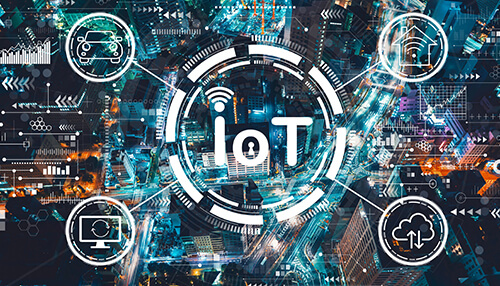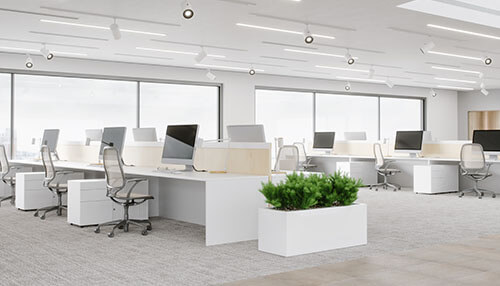Introduction
There is opposition to the conventional office. An agreement that this is a great location to work followed the first demand that workers work remotely. We soon came to the conclusion that having offices was not necessary for productivity. People may actually be trusted to complete their tasks from just about any place. What will be the office’s mandate in 2022, then? We now visit the office to interact with coworkers and take part in the workplace culture.
This is one of the primary factors influencing how the workplace will change in 2022, in addition to a shift in mindset about digital transformation and sustainability.
7 Trends for Smart Offices (2022)
The office atmosphere is changing at the same time that working habits are changing. In this article, we are going to discuss the top 07 trends for smart offices in 2022. So, keep reading it.
1. Usage of the IoT (Internet of Things) Will Increase Significantly
IoT devices often include sensors or detectors that have the ability to track, analyze, and send environmental data to a central server independently through the internet. Once data has been gathered, it can be analyzed to take the proper steps, such as notifying people through SMS when there is a water leak or posting on social media when meeting space is available.
2. Advanced Communication Systems
There is a considerably larger dependence on and demand for communication systems as a result of the move to workplace flexibility, the usage of web conferencing, and the rise in teleconferencing. Important innovations include 5G technology usage, IT-based communication technologies, and the increased use of commercial fiber.
3. A Mobile Workplace with Greater Flexibility
For 2022, adaptable workplaces are essential. Given the significant changes in worker flexibility and location, it is crucial that office space be planned with the employee in mind. In order to entice employees to come back to the office, it must be appealing, secure, and cozy.
As per recent research, 70% of workers work from home at least every week, and 48% of workers will probably do so after COVID-19, up from 30% prior to the epidemic, as per Gartner.
The ideal workplace is safe, peaceful, transformative, and flexible. It boosts productivity and morale, allowing employees to perform at their best and motivating them to work daily. A flexible office space promotes dynamics, wherein the office space provider offers flexible contracts, allowing tenants to expand, move out, or downsize as their circumstances change. With flexible mobile workplaces, businesses don’t have to worry about long contract periods and can enjoy transparent and fair pricing.
4. Utilization of the Concept, of “Healthy Building”
The word “healthy” facility, which encompasses the physical, mental, and social well-being of those who live in buildings and the surrounding structures, is beginning to be employed in the business world.
It is generally accepted that airflow, quality of air, thermal wellness, moisture, dirt, and insects, as well as the quality of water, noise, lights, and sights, are the main pillars of a healthy structure. It is thought that by addressing these problems, a healthy building can draw in workers, aid in lowering absenteeism and enhance both individual and organizational performance.
5. Offices Spaces Would Be More Sustainable
The trend toward green office towers is growing as changing climate and climate-related problems are becoming more and more important, as demonstrated during the last COP26 meeting. People today want their workplaces to be effective and environmentally sustainable.
A sustainable workplace involves using resources that won’t negatively affect employees’ health and the environment. Making office spaces more sustainable includes implementing paperless billing, promoting energy conservation, and encouraging employees to embrace eco-friendly practices, such as recycling, reusing, and reducing. For instance, instead of printing, workplaces can adopt digital signatures to reduce or eliminate paper use.
6. Temperature and Lighting Control
The use of intelligent temperature management and lighting in the workplace has various advantages. One benefit of daylighting architecture is energy conservation. Businesses can significantly reduce their energy expenses over time in these smart buildings by altering the lighting and temperature in accordance with occupancy levels.
A sustainable workplace builds a more productive and friendly environment with proper lighting and temperature. Also, there’s enough space for free movement, comfort, and team collaboration. Furthermore, workplaces can switch from traditional fossil fuels to renewable energy like solar power. Accelerating this effort involves calculating the office’s carbon footprint to increase sustainability.
7. Business Digital Signage
An electronic display is used to view information, advertisements, or other content is known as digital signage. Employing digital signs and other technology in the workplace has several advantages.
Installing digital signage can help save paper and money from printing flyers and physical signage. Digital signage also makes a business look more professional and serves as a great advertising tool that works day and night. Many digital signs are powered by energy-efficient light-emitting diode or LED lights, and some are solar-powered.
Conclusion
These are the top 07 trends that would be followed and implemented in the near time. Workplaces incorporate one or more of the above elements in the present time too.




